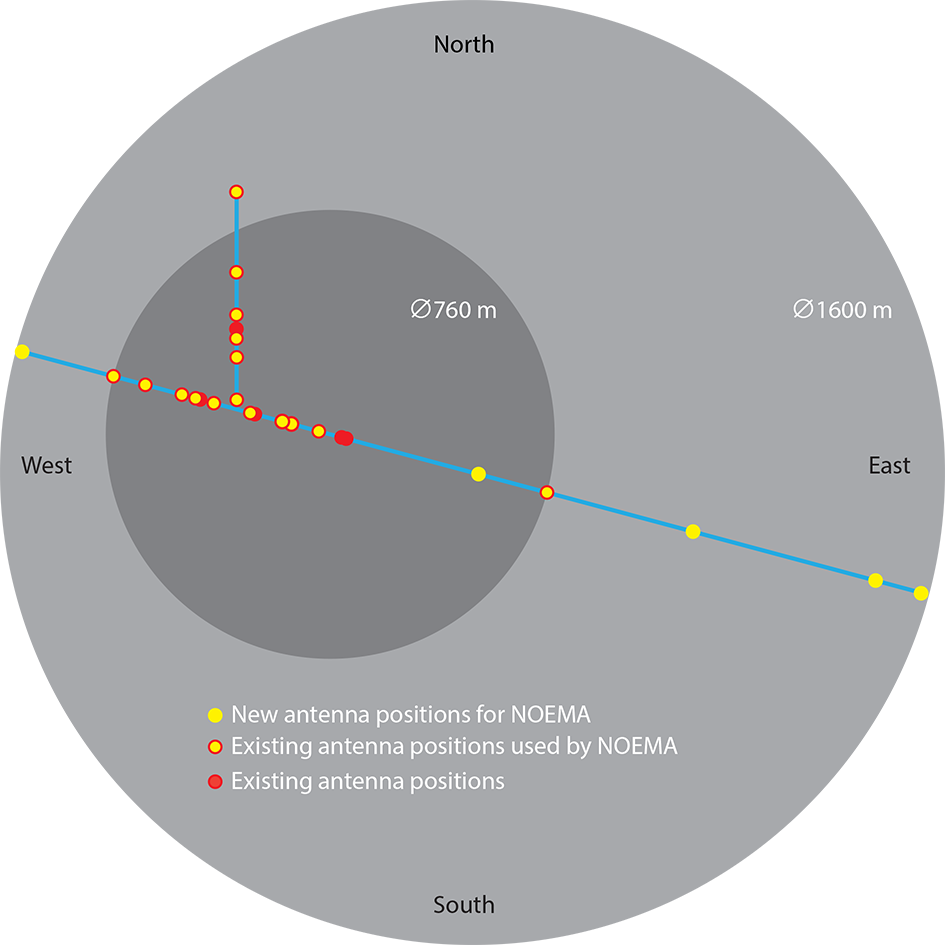Terms of use | Contact us
Copyright © 2009-2023 IRAM. All rights reserved.
YOU ARE ON THE LEGACY WEBSITE OF IRAM. YOU WILL FIND THE CURRENT WEBSITE HERE.
NOEMA a new telescope to explore the invisible universe
NOEMA, the successor to the Plateau du Bure observatory, is the most powerful radiotelescope of the Northern Hemisphere:
- twelve 15-meter antennas on a 2550-meter-high plateau in the French Alps
- 2000 meters of track on which the antennas can be moved into different configurations
- 48 high technology reception systems with sensitivities close to quantum limit
- state-of-the-art electronic equipment designed to process the celestial data
NOEMA is able to answer some of the most fundamental questions of modern astronomy:
- see the formation of the first galaxies in the universe
- understand the role of super-giant black holes at the center of galaxies
- probe the dynamics and the chemical evolution of nearby galaxies
- detect complex organic molecules while searching for the key elements of life
- follow the various stages of stellar formation to the appearance of planetary systems
NOEMA is the biggest astronomical project in Europe - as such it:
- serves an international community of astronomers
- undertakes hundreds of scientific research projects per year
- operates in synergy with the largest astronomical instruments on the ground and in space such as ALMA (the most powerful telescope of the Southern Hemisphere) and, in the future, the James Webb Space Telescope, successor to the Hubble Space Telescope
- allows testing and implementing new technologies that push the limits of the exploration of our universe
NOEMA in numbers:


During observations NOEMA's 12 antennas function as a single telescope, a technique called interferometry. With the antennas pointing towards the same cosmic source, the signals received by each of them are subsequently combined. This method gives NOEMA a resolution of a 1700 meter telescope, equivalent to the distance between its outermost antennas.
The NOEMA fact sheets for scientists and engineers can be downloaded here: NOEMA Phase A study.

